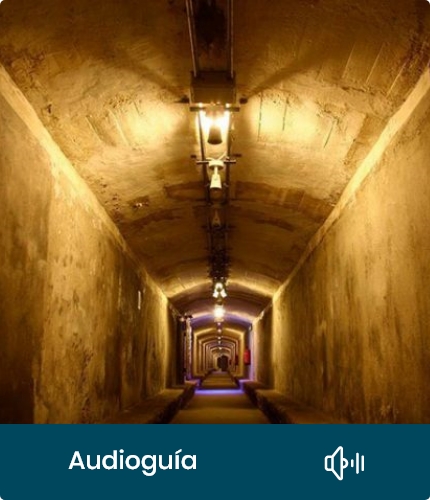AUDIOGUIDES
- Home
- Audio Guías
- Spanish Civil War Shelters

Spanish Civil War Shelters
Shelters began to take shape in 1936, construction in February 1937 and ended in 1938. The underground tunnels designed by arquitect Guillermo Langle Rubio, engineer José Fornieles and mining engineer Carlos Fernandez, who led the construction of the tunnels to 9 metres deep to safeguard human lives in the bombing occurred in the city.
De los 4,5 km diseñados por el arquitecto se ha recuperado casi 1 km., que coincide con la arteria principal: el Paseo de Almería, aunque otros tramos de galería se encuentran repartidos por diferentes barrios. Los refugios llegaron a albergar a 34.144 personas cuando, en aquella época, Almería contaba con una población que rondaba los 50.000 habitantes. Los almerienses que no se refugiaban en las galerías, se guarecían en Refugios naturales, como las cuevas de La Chanca o los depósitos del mineral del hierro.
Of the 4.5 km designed by architect almost 1 km has been recovered, which coincides with the main artery. Paseo de Almería, although other sections of tunnels are scattered throughout the neighbourhoods. Shelters came to house 34,144 people when, at that time, Almería had a population that was around 50,000. The almerienses not sheltered in the galleries, they took refuge in natural shelters such as caves of La Chanca or iron ore deposits.
After the war, the access points were concealed with a series of kiosks that become part of the city street furniture, kiosks of which still can be seen in some places.
The shelters were never again used and the tunnels have remained dormant until December 2006, the restoration carried out by the city of Almeria, was completed. Currently, they have the a variety of spaces: A pantry store, a private retreat where Guillermo Langle Rubio honors and you can also visit the operating room, which has an instrumental during the period. Today they have become the biggest Shelters in Europe which are open to the public.




